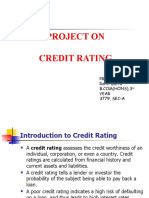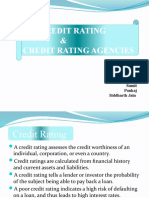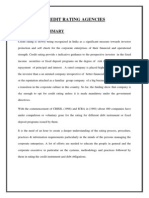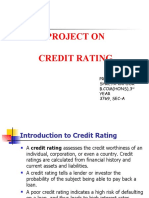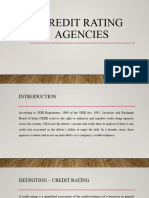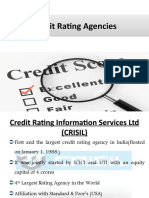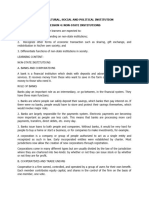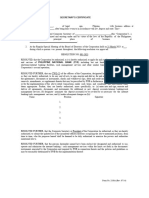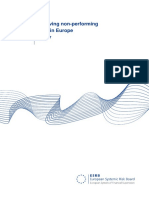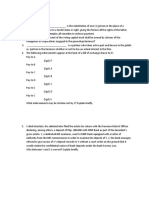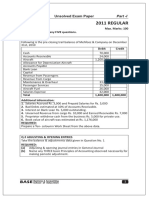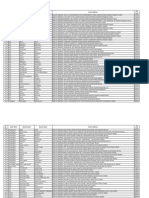Unit 6
Credit Rating
1. Introduction to Credit Rating
Credit Rating is the assessment of the creditworthiness of a borrower or financial
instrument (like a bond or company).
It tells investors how safe it is to lend money to or invest in a company or government.
It acts like a financial report card, indicating the ability to repay loans or debts.
2. Importance of Credit Rating
Helps investors make informed decisions.
Builds trust between borrower and lender.
A high rating = low risk = easier access to loans.
A low rating = high risk = difficulty in raising funds.
3. Regulatory Framework
In India, credit rating agencies (CRAs) are regulated by:
Securities and Exchange Board of India (SEBI)
SEBI lays down rules to ensure:
Transparency
Fair practices
Investor protection
4. Major Credit Rating Agencies in India
1. CRISIL Ltd (Credit Rating Information Services of India Limited)
Established in 1987.
First credit rating agency in India.
Offers ratings, research, and advisory services.
Acquired by S&P Global.
2. ICRA Ltd (Investment Information and Credit Rating Agency)
Started in 1991.
Provides ratings for corporate debt, bank loans, etc.
Linked with Moody’s Investors Service.
3. CARE Ltd (Credit Analysis and Research Ltd)
Established in 1993.
� Provides ratings for various sectors: manufacturing, finance, service, etc.
Known for being independent and reliable.
4. Fitch Ratings India
Part of Fitch Group, a global credit rating agency.
Provides international and domestic credit ratings.
Focuses on Indian corporations, banks, and financial institutions.
5. Rating Process and Methodology
Here’s how credit rating agencies work:
Step-by-Step Process:
1. Request for Rating
The company applies for a rating to raise funds.
2. Data Collection
The agency collects financial data: balance sheets, profit-loss, business plans, etc.
3. Analysis by Rating Committee
Experts analyze the company’s financial position, industry, management, etc.
4. Rating Decision
Based on the analysis, a rating is assigned.
5. Publication
The rating is made public (with the company’s approval).
6. Monitoring
Ratings are reviewed regularly and changed if performance improves or worsens.
6. Factors Considered in Rating
Financial performance (profitability, liquidity, debt)
Management quality
Industry risk
Market position
Past credit history
Future growth potential
7. Rating Symbols and Grades
Each agency uses a set of symbols to represent the creditworthiness. Let’s look at common
examples:
�Investment Grade (Good to invest)
Symbol Meaning
AAA Highest Safety
AA High Safety
A Adequate Safety
BBB Moderate Safety
Speculative Grade (Risky Investment)
Symbol Meaning
BB Moderate Risk
B High Risk
C Very High Risk
D Default (Not able to repay debt)
Note: Agencies may use “+” or “–” signs for finer distinctions (like AA+, BBB–).
Summary
Credit Rating is like a financial health check-up for companies or instruments.
Helps investors decide where to invest safely.
In India, SEBI regulates rating agencies.
Major agencies: CRISIL, ICRA, CARE, Fitch.
Ratings are based on financial analysis, industry conditions, and company reputation.
Rating symbols (AAA to D) help in easy comparison of risk levels.













